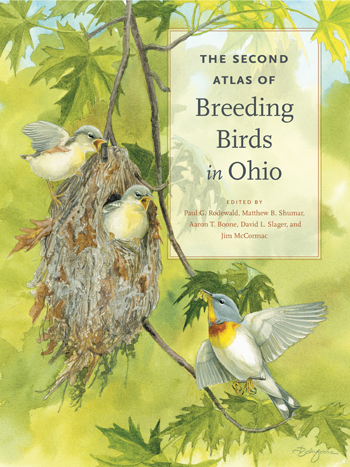 A highly anticipated new book on breeding birds in Ohio sheds light on the current distribution and changes in the status of the state’s bird populations.
A highly anticipated new book on breeding birds in Ohio sheds light on the current distribution and changes in the status of the state’s bird populations.
The Second Atlas of Breeding Birds in Ohio — published by the Pennsylvania State University Press and edited by Paul G. Rodewald, Matthew B. Shumar, Aaron T. Boone, David L. Slager and Jim McCormac — comes 25 years after the state’s first breeding bird atlas and provides a new look at contemporary Ohio bird life and how it has changed in that time.
Unlike the first atlas, “the second atlas also includes new data on bird abundance using point-count surveys, which allowed the team to generate population estimates for individual species and map their densities across the state,” said Shumar, project coordinator for the second atlas and wildlife biologist in CFAES’s School of Environment and Natural Resources.
“In total, 194 species were confirmed to nest within Ohio, including five species never before documented, as well as five species that haven’t been observed nesting within the state in 50-100 years,” Shumar said.
The 600-page book features seven image-rich chapters and includes 202 full accounts of bird species in Ohio.
“The book is written in a way to appeal to a wide audience with useful information on Ohio’s natural history, the distribution of birds across Ohio and where to go to find them,” Shumar said.
The book is dedicated to the hundreds of volunteers who lent their time and personal resources to the project.
“Nearly 1,000 volunteer birdwatchers contributed more than 1 million observations of birds across the state from 2006 to 2011,” Shumar said.
“Data generated by the second atlas provide a wealth of opportunity for biologists and land managers to explore the complex relationships between species distributions and land use.
“Researchers here in the School of Environment and Natural Resources are already using the atlas data to explore the influence of climate change on bird distributions and assess the potential impacts to bird species resulting from large-scale energy development.”
The atlas is widely available from online retailers, including Amazon and Barnes & Noble. For a limited time, it can be purchased at a reduced price directly from Penn State Press at go.osu.edu/BreedingBirdAtlas.